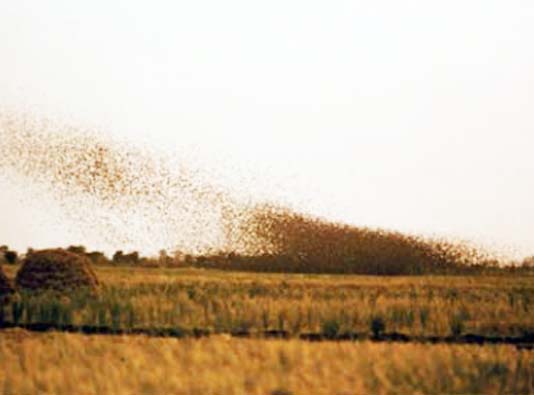The Quelea Bird
The most notorious bird pest of small-grain cereal crops in the DLCO-EA region and the species that is of the greatest concern to the Ministries of Agriculture of the Member Countries, is the Ploceid weaver the Red-billed Quelea, Quelea quelea, known as the Quelea bird or simply as the quelea.
Quelea is a small weaver bird that weighs about 20g and is found mostly in semi arid areas. During the no breeding season the bird has a red beak thus it is commonly referred to as Red billed Quelea.
The birdsmove in groups/flocks of the size of 20 – 100,000 birds and feeds on small grain crops. It is known to be the most destructive bird in Africa.
In Eastern Africa, the Quelea is found in Sudan, Eritrea, Ethiopia, Somalia, Uganda, Kenya and Tanzania.
Crops that are attacked by Quelea birds include Wheat, Teff and in some cases Barley. Quelea does not feed on Maize and Sunflower.
The rainy season in East Africa is strongly influenced by the movement of the Inter Tropical Convergence Zone (ITCZ). The ITCZ follows the sun northwards crossing the Equator during the first half of the year and then returns back southwards during the second half of the year. Wherever it goes the ITCZ brings rain, but the amount it brings is variable. Upon arrival in an area where quelea are spending the dry season, the rains cause the annual grass seed to germinate and begin to grow.
This deprives the birds of their preferred food and compels them to move. If the rains are widespread the birds may be forced to travel some considerable distance to find a new food source. This migration is known as the early rains migration. In years of scattered or poor rains quelea may not move far or may not move at all because a sufficient source of seed may remain ungerminated and available.
Some birds may develop full breeding conditions very quickly after arriving in the early rains quarters and establish a colony there, but usually they move back across the rain front during what is called the breeding migration.



